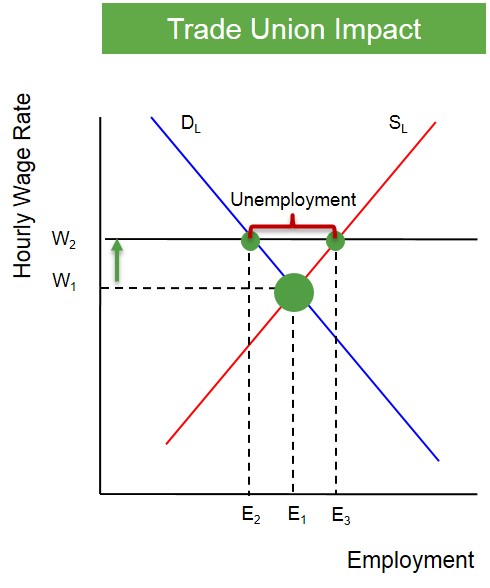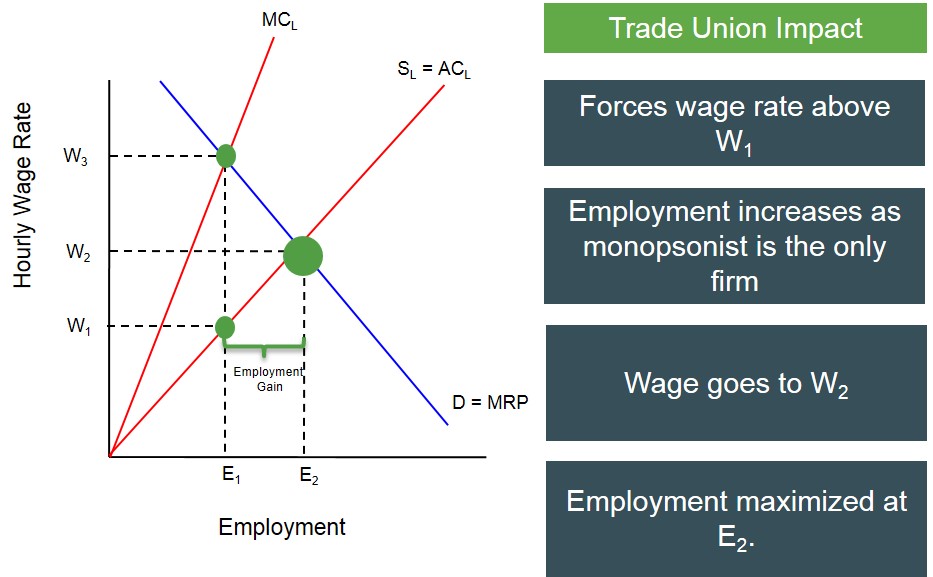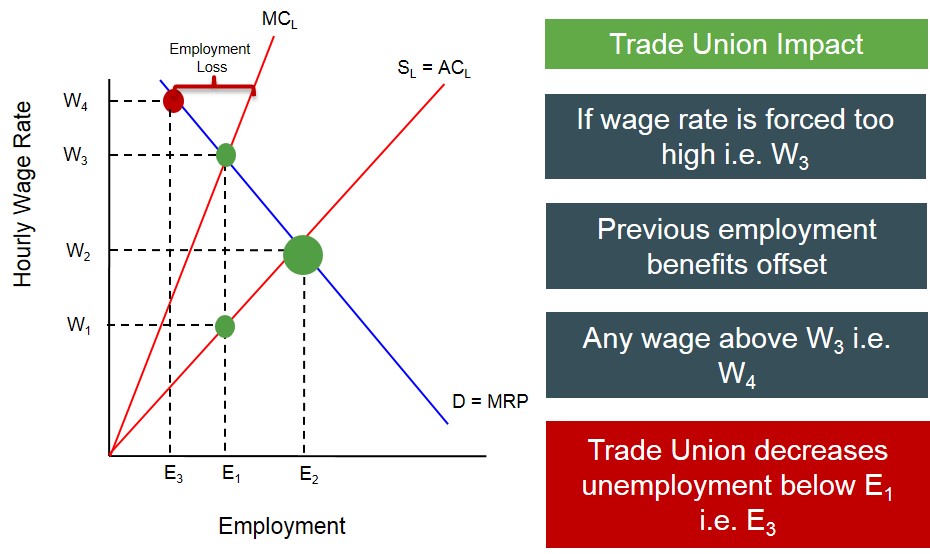An organisation established for the welfare of workers and to negotiate collectively with employers on their behalf e.g. UNISON represents public service employees and the NUT represents teachers.
Below is a diagram to show the effect that a union would have on a perfectly competitive labour market. The union would force the wage rate above the prevailing wage rate. This will create an excess supply of labour which would later turn to unemployment as firms become reluctant to take on workers who demand higher wages. So perversely the union has increased the level of unemployment in the labour market.

Trade unions though can sometimes increase the level of employment in the industry particularly in industries where there is only one buyer of labour i.e. a monopsony. In the diagram below as long as the trade union employs a wage rate between w1 and w3, employment will increase, due to the unique nature of a monopsonist's steep marginal cost of labour curve.

However, if the trade union places too high a wage rate in the labour market i.e. at w4. Then employment will be reduced and the trade union has increased the level of unemployment in the market by creating unsustainable wage rates.
